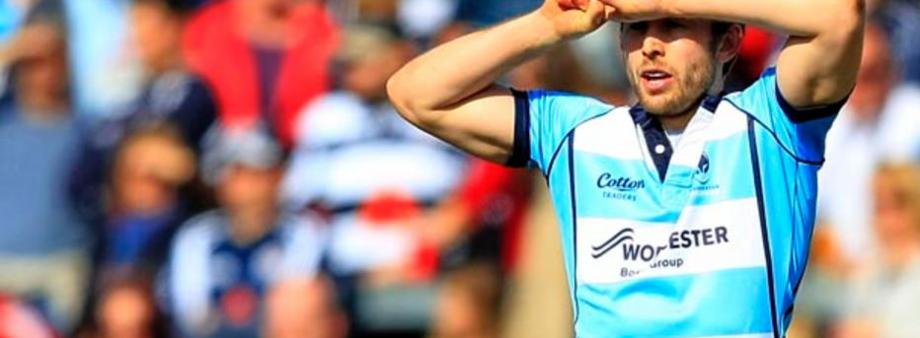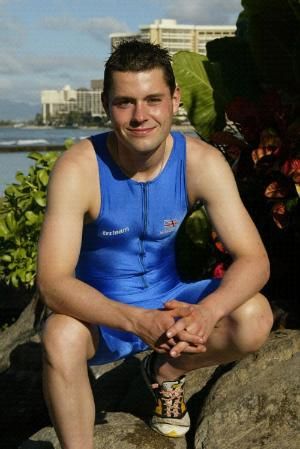
Triathlon and Long Distance Walking
Gary Blakie
October 2005
At the age of 21 Gary Blakie is one of the youngest competitors in the 2005 World Triathlon Championships in Honolulu, Hawaii on Sunday 9 October. The race involves a gruelling 1.5K (0.9 miles) swim, 40K (25 miles) bike ride and 10K (6.2 miles) run, all in one day.
Gary secured his place on the GB team at the 2005 UK Triathlon Championships where he finished in 8th place, having beaten 40 of Britain’s top athletes competing for the honour of representing Britain in the 20-24 age group.
Hours of preparation and “blood, sweat, and tears” is behind Gary’s success. A typical week of training includes:
· Over 3.5 miles swimming
· 150 miles cycling
· 25 miles running
This is the equivalent of travelling from London to Leeds by water, bike and foot each week.
Gary credits his uncle and coach, Colin Gardener, as one of the factors contributing to his success.
“He’s the reason why I’m doing so well; he’s an excellent coach, and I believe he can help anyone reach their potential.”
Gary is clearly enjoying a talent that lies within the family – his father Eric Blakie will also be competing in the 2005 Championships in the 50-55 age group. Gary credits his father for introducing him to triathlons, having been encouraged to enter his first race at Cockermouth in 2001. “Those were the days”, Gary recalls. “I even had time to get dried with a towel after the swim and put socks on – there is no time for that now, as every second counts and can make a difference between winning and losing.”
At the age of 21 Gary Blakie is one of the youngest competitors in the 2005 World Triathlon Championships in Honolulu, Hawaii on Sunday 9 October. The race involves a gruelling 1.5K (0.9 miles) swim, 40K (25 miles) bike ride and 10K (6.2 miles) run, all in one day.
Gary secured his place on the GB team at the 2005 UK Triathlon Championships where he finished in 8th place, having beaten 40 of Britain’s top athletes competing for the honour of representing Britain in the 20-24 age group.
Hours of preparation and “blood, sweat, and tears” is behind Gary’s success. A typical week of training includes:
· Over 3.5 miles swimming
· 150 miles cycling
· 25 miles running
This is the equivalent of travelling from London to Leeds by water, bike and foot each week.
Gary credits his uncle and coach, Colin Gardener, as one of the factors contributing to his success.
“He’s the reason why I’m doing so well; he’s an excellent coach, and I believe he can help anyone reach their potential.”
Gary is clearly enjoying a talent that lies within the family – his father Eric Blakie will also be competing in the 2005 Championships in the 50-55 age group. Gary credits his father for introducing him to triathlons, having been encouraged to enter his first race at Cockermouth in 2001. “Those were the days”, Gary recalls. “I even had time to get dried with a towel after the swim and put socks on – there is no time for that now, as every second counts and can make a difference between winning and losing.”
Diagnosed with diabetes at 12
Gary’s
success in one of the world’s toughest endurance events is made all the
more remarkable by the fact that he was diagnosed with Type 1 diabetes
at an early age.
Gary was diagnosed with diabetes at the age of
12, during a skiing trip to Colorado, USA. The fact that he had been
unwell for a while had been attributed to a stubborn stomach bug – with
the sugary treatments administered to treat him only making him worse.
Eventually,
a urine strip test confirmed the sneaking suspicions of his mum that
Gary was suffering from diabetes. Showing signs of a fighting spirit
that has stood him in good stead for his sporting career, he returned
to his skiing holiday after an overnight stay in hospital.
Asked how he coped with the news, Gary says:
“Being diagnosed was like a kick in the teeth but looking back I’m glad because it has led me to where I am now.”
Training with diabetes
Gary
controls his condition with a combination of a long-acting basal
insulin analogue to control his background insulin levels and a
short-acting insulin that he takes at meal times.
Managing his
diabetes when training and competing has been a tough learning curve.
Having found a treatment that suits all his needs, Gary has finally
arrived at a precise personal regime which means that he can manage his
blood sugars without having to test or take insulin during a race. With
his current insulin, he can increase the amount of insulin in a
controlled fashion so that he can maintain his efforts in competition.
“My
current insulin treatment has made a difference to my everyday life and
to me as a top athlete. It has no peak periods like other traditional
insulins. For sport, this is ideal as it means I get a constant supply
of insulin throughout the event. In a competitive environment where
every second counts, this has been invaluable to my success as an
athlete.”
Despite all the training, Gary has also found time to
support the cause of Diabetes UK, a self-help charity for people with
diabetes, which has commended Gary for his support and hard work in
successfully raising the profile of the charity.
Asked what would be his advice to other people in a similar position, Gary said:
“If
you’re willing to fight, don’t hold back. Your friends will help you,
your family will support and cheer you on and so will I.”
RIchard Hudson
The longest Triathlon distance I have tried to date is the ‘Olympic’ distance which is a 1500m swim followed by 40km bike ride and 10km run. This takes me approx. 2hrs 30mins.
The longest Triathlon distance I have tried to date is the ‘Olympic’ distance which is a 1500m swim followed by 40km bike ride and 10km run. This takes me approx. 2hrs 30mins.
My approach has
been similar to the marathon above. Ie) I look to take a dextrose
tablet every 7 to 10 mins. This is obviously not practical during the
swim so I look to start a bit higher to compensate - ideally around
14mmol/l. In non race practices I have found that this will leave me
around 8 to 10 mmol/l after the 40mins or so of swimming. If it’s a
lake / sea / river swim I will tuck a small glucose gel sachet in the
arm of my wetsuit for use in emergencies. So far I have not had to use
this !
On the bike I use a glucose sports drink rather than
tablets but again it works out at about the equivalent of a dextrose
tablet every 10 mins. As the consequences of coming off the bike at
20mph due to a minor hypo feel well worth avoiding I am more cautious
on the bike and have probably run high at times. I have read of
several diabetic cyclists who have taped testing kits to their handle
bars so that they can test on the move which I’m sure is a good move
for the longer distance events. On the run – as in the later stages of
a marathon – I find the sugar need increases up towards 2 tablets a
mile.
Long Distance Walking
I recently took part in a charity event that started from Fort William in Scotland with a 30mile bike ride and then switched to a 42mile walk to finish in Inverness. This took 18.5 hrs with 3 half hour meal stops. The event started at 7am and finished for me therefore in the early hours of the next day
I recently took part in a charity event that started from Fort William in Scotland with a 30mile bike ride and then switched to a 42mile walk to finish in Inverness. This took 18.5 hrs with 3 half hour meal stops. The event started at 7am and finished for me therefore in the early hours of the next day
Again I swapped my normal breakfast fast acting insulin
for 10 units of slow acting insulin 2 or 3 hours before the start. I
injected 3 units of fast acting insulin at the first meal stop (chilli
con carne baked potato !) but found that I was having to eat a lot of
dextrose to keep my sugar levels up an hour later. Just relying on the
slow acting insulin would have been fine in hindsight. Due to the pace
of the event it was also relatively easy to test blood sugars along the
way and confirm that all was in balance. After 10 hours I injected a
further 10 units of slow acting insulin as I anticipated the morning
injection would be tailing off. I didn’t track exactly what I was
eating but it was a slow but steady snacking of dextrose tablets,
glucose drinks, soup, bread, cakes etc. all the way – very enjoyable ! At the end my sugar levels were normal.
As with the other
events above I found that I only needed about 75% of normal insulin
levels for the following 2 days (despite barely being able to walk down
the stairs..)
Reading
I have found the runsweet/diabetes and sports web site an excellent source of information. I have also found a book ‘The Diabetic Athlete’ by Sheri Colberg useful. This is an American book and some of the terminology can be confusing for a UK reader. Its also targeted at health care providers as well as diabetics and is fairly technical in parts. However it has plenty of real examples of diabetics participating in an enormous range of sports and activities including extreme endurance events. The insulin and food regimes that work for them are described in detail. No excuses for sitting the arm chair after reading this !
I have found the runsweet/diabetes and sports web site an excellent source of information. I have also found a book ‘The Diabetic Athlete’ by Sheri Colberg useful. This is an American book and some of the terminology can be confusing for a UK reader. Its also targeted at health care providers as well as diabetics and is fairly technical in parts. However it has plenty of real examples of diabetics participating in an enormous range of sports and activities including extreme endurance events. The insulin and food regimes that work for them are described in detail. No excuses for sitting the arm chair after reading this !


